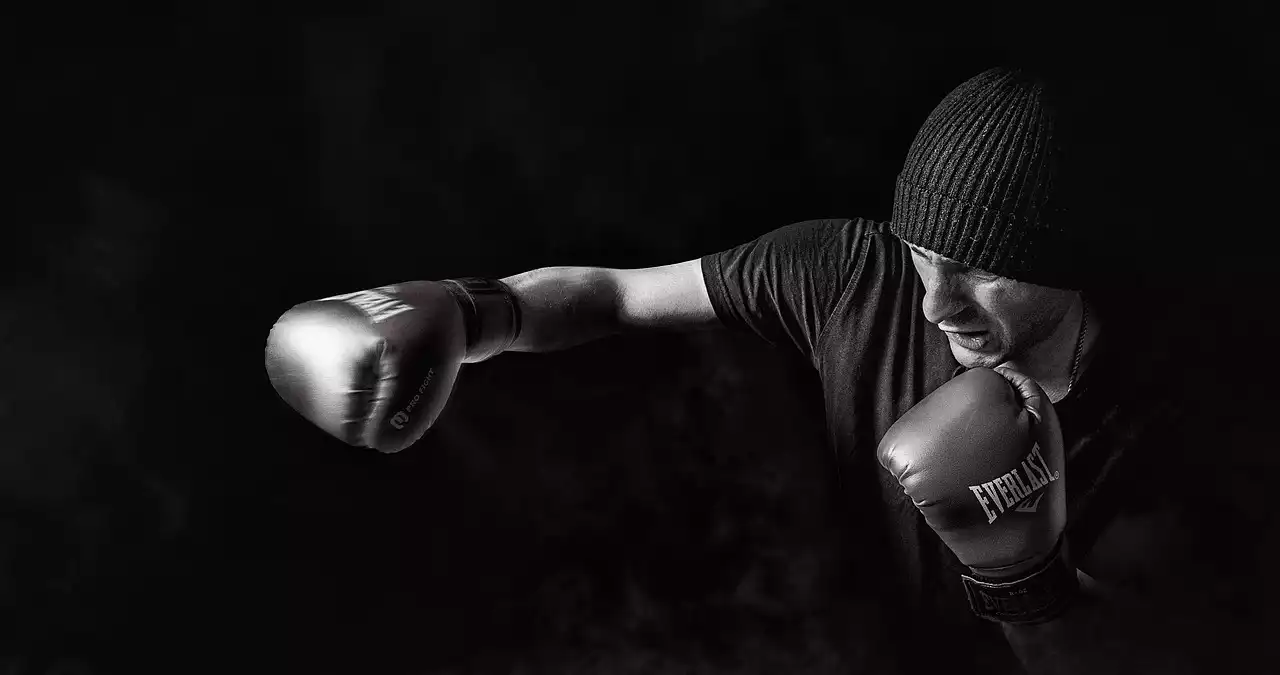What is Kickboxing?
Kickboxing is a full-body workout that combines martial arts techniques with cardio conditioning. It involves using your hands, feet, elbows, and knees to strike and defend against an opponent. Kickboxing is a great way to improve your strength, flexibility, and endurance while also learning self-defense skills.
Kickboxing originated in Japan in the 1960s and became popular in the United States in the 1970s and 1980s. Today, kickboxing classes are offered at gyms and martial arts studios all around the world.
Benefits of Kickboxing
Kickboxing offers a range of benefits beyond just physical fitness. Here are just a few of the many reasons to give kickboxing a try:
1. Weight Loss and Fitness
Kickboxing is a high-intensity workout that burns calories and improves cardiovascular fitness. According to the American Council on Exercise, a 125-pound person can burn up to 750 calories in a one-hour kickboxing class. That's more than you'd burn in an hour of running or cycling.
In addition to burning calories, kickboxing can help improve your endurance, strength, and flexibility. It's a great way to get in shape and stay motivated.
2. Stress Relief and Mental Health
Kickboxing can also be a great way to relieve stress and improve your mental health. The physical activity and mental focus required in kickboxing can help reduce anxiety, depression, and other mental health issues.
In addition, kickboxing can help boost your self-confidence and self-esteem. Learning self-defense skills and improving your fitness can give you a sense of empowerment and accomplishment.
3. Community and Support
Finally, kickboxing can provide a sense of community and support. Many kickboxing classes are taught in a group setting, which can help you connect with others who share your fitness goals. In addition, instructors and classmates can provide motivation and support to help you stay on track and reach your goals.
Kickboxing Equipment and Gear
Before you get started with kickboxing, you'll need to invest in some basic equipment and gear. Here's what you'll need:
1. Gloves
Kickboxing gloves are specially designed to protect your hands while striking a target. They come in a range of sizes and weights, so it's important to choose the right pair for your needs. Look for gloves that are comfortable, durable, and offer good wrist support.
2. Hand Wraps
Hand wraps are worn underneath your gloves to provide extra support and protection for your hands and wrists. They can help prevent injuries and reduce the impact of your punches and strikes.
3. Shin Guards
Shin guards are worn to protect your shins and feet during kickboxing. They're especially important if you're a beginner, as you may be more prone to accidentally hitting your partner during sparring.
4. Mouthguard
A mouthguard is essential for protecting your teeth and gums during kickboxing. Look for a mouthguard that's comfortable, easy to breathe with, and offers good protection.
5. Clothing
Finally, you'll want to wear comfortable, breathable clothing that allows you to move freely. Many kickboxers wear shorts or leggings and a t-shirt or tank top. Avoid anything too loose or baggy, as it can get in the way during your workout.
Basic Kickboxing Moves - Punches and Kicks
Now that you have your gear, it's time to learn some basic kickboxing moves. Here are the most common punches and kicks you'll learn in kickboxing:
1. Jab
The jab is a quick, straight punch that's thrown with your lead hand. It's often used to set up other punches or to keep your opponent at bay.
To throw a jab, stand with your feet shoulder-width apart and your hands up in front of your face. Extend your lead hand straight out in front of you, rotating your palm down as you do so. Your elbow should be slightly bent, and your other hand should be up protecting your face.
2. Cross
The cross is a powerful punch that's thrown with your rear hand. It's often used to follow up a jab or to finish off a combination.
To throw a cross, stand with your feet shoulder-width apart and your hands up in front of your face. Rotate your hips and shoulders as you extend your rear hand straight out in front of you. Your palm should be facing down, and your elbow should be slightly bent.
3. Hook
The hook is a circular punch that's thrown with your lead hand. It's often used to attack your opponent's head or body from the side.
To throw a hook, stand with your feet shoulder-width apart and your hands up in front of your face. Rotate your hips and shoulders as you bring your lead hand around in a circular motion. Your elbow should be bent, and your palm should be facing down.
4. Uppercut
The uppercut is an upward punch that's thrown with your rear hand. It's often used to attack your opponent's chin or body from below.
To throw an uppercut, stand with your feet shoulder-width apart and your hands up in front of your face. Bend your knees and sink your weight down as you bring your rear hand up in an upward motion. Your palm should be facing up, and your elbow should be bent.
5. Front Kick
The front kick is a powerful kick that's aimed at your opponent's midsection or head. It's often used to create distance or to attack your opponent from a distance.
To throw a front kick, stand with your feet shoulder-width apart and your hands up in front of your face. Lift your lead knee up in front of you, then extend your foot out in a straight line. Your toes should be pointed up, and your foot should be flexed.
How to Get Started with Kickboxing - Finding a Gym or Instructor
Now that you know the basics of kickboxing, it's time to find a gym or instructor to help you get started. Here are a few things to look for when choosing a kickboxing class:
1. Instructor Qualifications
Look for an instructor who is certified by a reputable organization, such as the International Kickboxing Federation or the National Strength and Conditioning Association. A qualified instructor will be able to teach you proper technique and help you avoid injury.
2. Class Schedule and Location
Choose a class that fits into your schedule and is convenient for you to get to. Look for classes that are offered at a time and location that works for you.
3. Class Size and Atmosphere
Consider the size and atmosphere of the class. Some people prefer smaller, more intimate classes, while others prefer larger, more energetic classes. Choose a class that fits your personality and preferences.
4. Trial Class
Many gyms and studios offer trial classes, which allow you to try out the class before committing to a membership. Take advantage of these opportunities to find a class that's right for you.
Kickboxing for Weight Loss and Fitness
Kickboxing is a great way to lose weight and get in shape. Here are a few tips for using kickboxing to achieve your fitness goals:
1. Set Realistic Goals
Set realistic goals for your kickboxing workouts. Start with small goals, such as attending one class per week, and gradually increase your intensity and frequency as you get stronger.
2. Mix Up Your Workouts
Don't be afraid to mix up your kickboxing workouts with other forms of exercise, such as running or weightlifting. This will help prevent boredom and keep you motivated.
3. Focus on Technique
Focus on proper technique during your kickboxing workouts. This will help you avoid injury and get the most out of your workouts.
4. Monitor Your Progress
Track your progress by keeping a record of your workouts and measuring your weight and body fat percentage. This will help you stay motivated and see how far you've come.
Kickboxing for Stress Relief and Mental Health
Kickboxing can also be a great way to relieve stress and improve your mental health. Here are a few tips for using kickboxing to manage stress:
1. Focus on the Present
During your kickboxing workouts, focus on the present moment and let go of any worries or stressors. This will help you relax and enjoy your workout.
2. Use Kickboxing as a Release
Use kickboxing as a release for your stress and frustration. Picture your stressors as you punch or kick the bag, and imagine releasing them with each strike.
3. Practice Mindfulness
Practice mindfulness during your kickboxing workouts by focusing on your breath and your movements. This will help you stay present and calm.
4. Connect with Others
Connect with others in your kickboxing class by striking up a conversation or joining a kickboxing group outside of class. This will help you feel supported and connected.
Safety Tips for Kickboxing
While kickboxing is a fun and effective workout, it's important to take safety precautions to avoid injury. Here are a few tips for staying safe during your kickboxing workouts:
1. Warm Up and Cool Down
Always warm up before your kickboxing workout and cool down afterward. This will help prevent injury and reduce muscle soreness.
2. Wear Proper Gear
Wear proper gear, including gloves, hand wraps, shin guards, and a mouthguard. This will help protect your hands, feet, and mouth during your workout.
3. Listen to Your Body
Listen to your body and don't push yourself too hard. If you feel pain or discomfort, take a break and rest.
4. Learn Proper Technique
Learn proper technique from a qualified instructor. This will help you avoid injury and get the most out of your workouts.
Kickboxing Workout Routines and Exercises
Ready to put your kickboxing skills to the test? Here are a few kickboxing workout routines and exercises to try:
1. Shadowboxing
Shadowboxing is a great way to practice your punches and kicks without a partner or equipment. Stand in front of a mirror and visualize an opponent as you throw punches and kicks.
2. Heavy Bag Workouts
Heavy bag workouts are a great way to improve your strength and endurance. Choose a bag that's the right weight for your skill level and practice your punches and kicks.
3. Partner Workouts
Partner workouts can help you practice your sparring skills and improve your reaction time. Work with a partner to practice your punches, kicks, and defensive moves.
4. Circuit Training
Circuit training involves performing a series of exercises in a specific order with little to no rest in between. Choose a series of kickboxing exercises, such as punches, kicks, and squats, and perform them in a circuit for a full-body workout.
Things to Remember
Kickboxing is a fun and effective way to get in shape, relieve stress, and learn self-defense skills. By following the tips and techniques outlined in this guide, you'll be well on your way to becoming a kickboxing pro. Just remember to always prioritize safety and listen to your body. Happy kicking!









